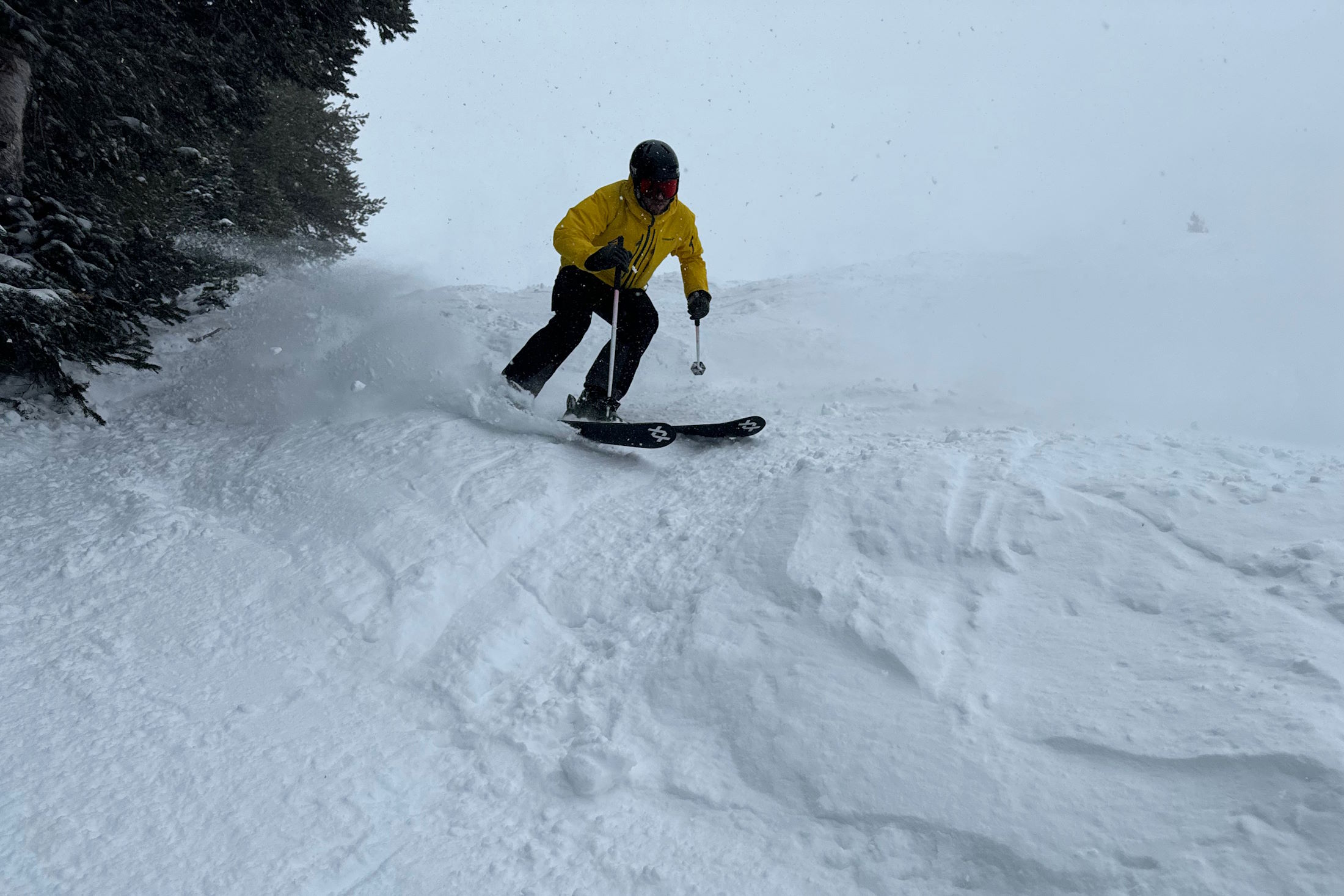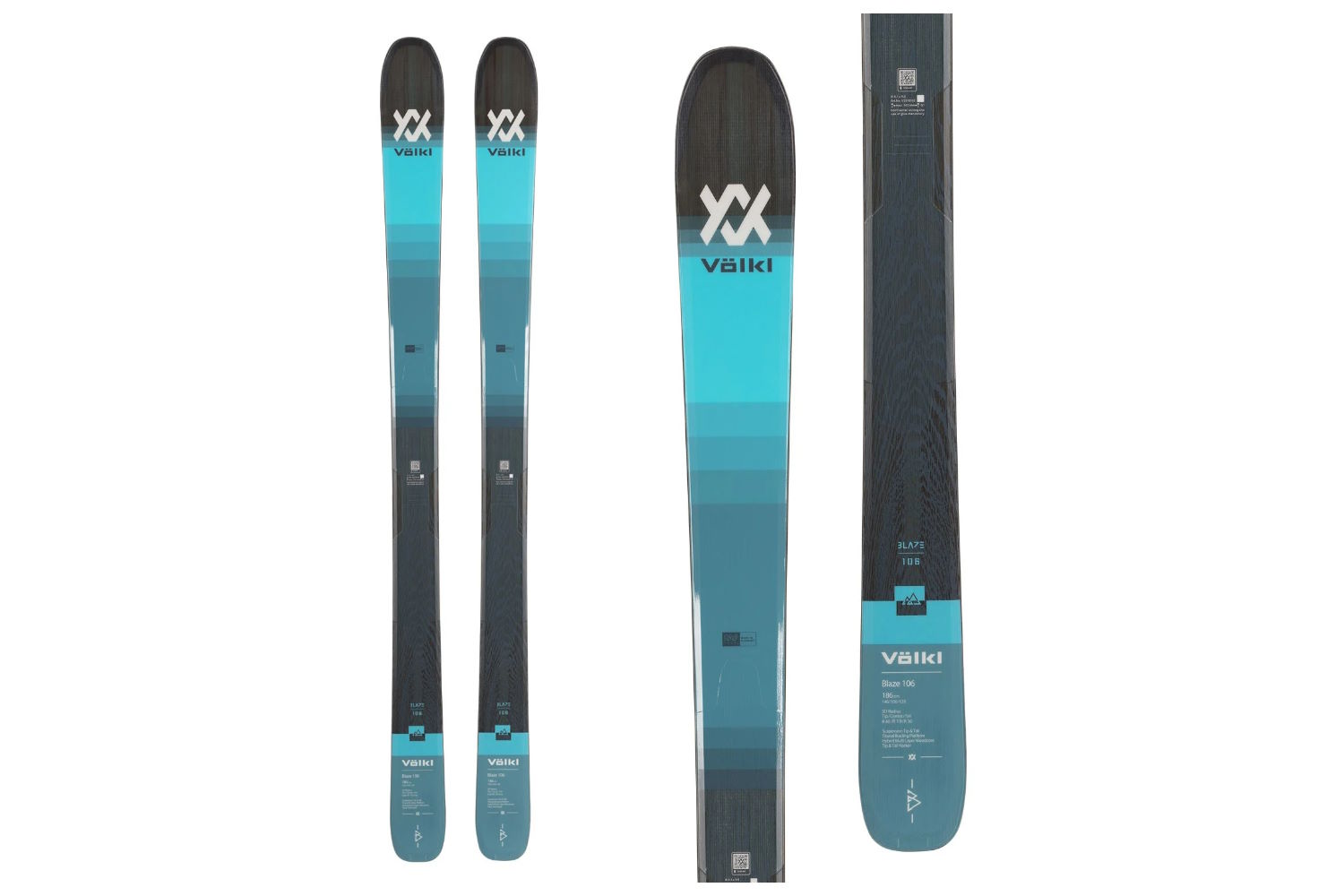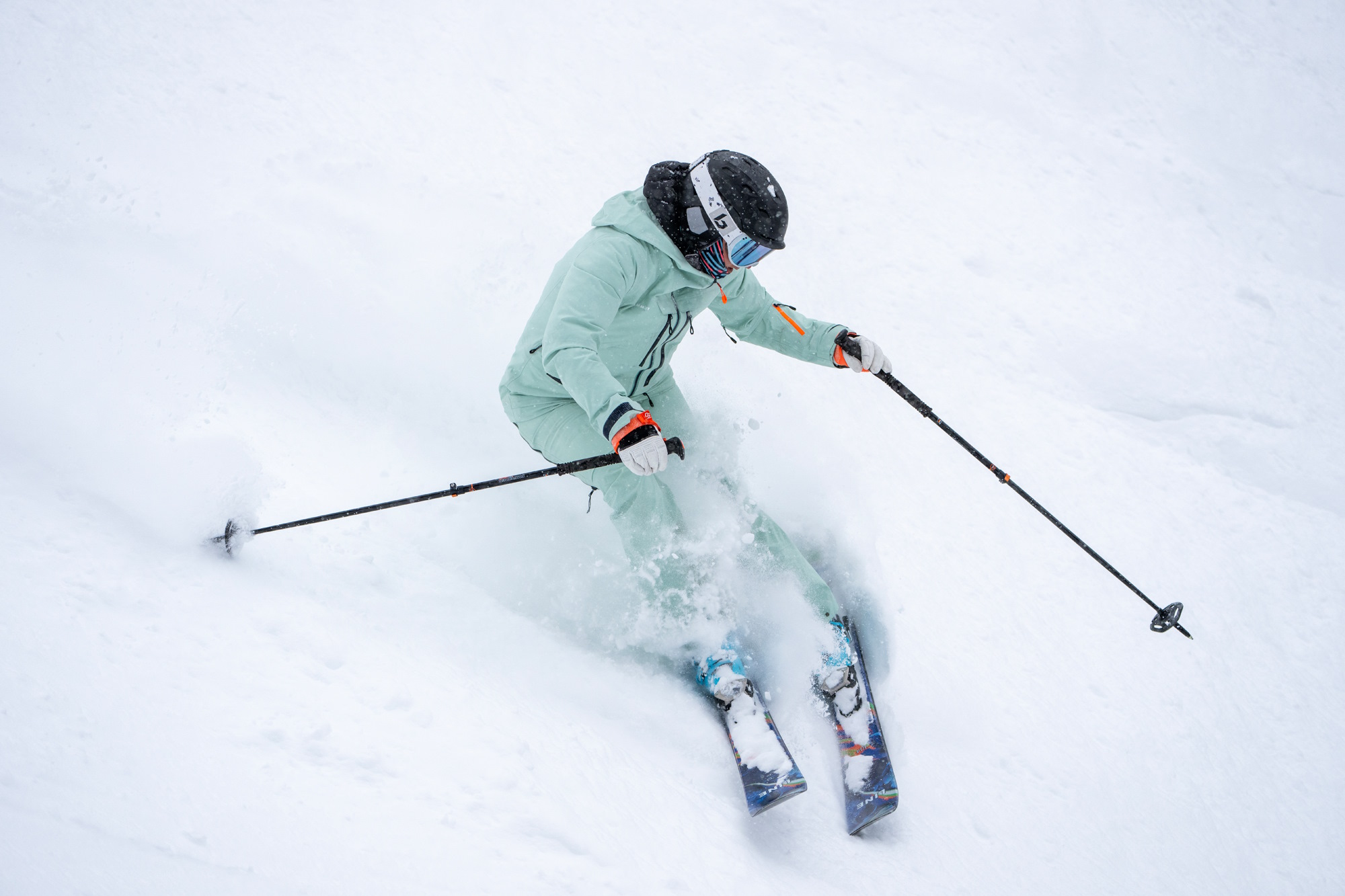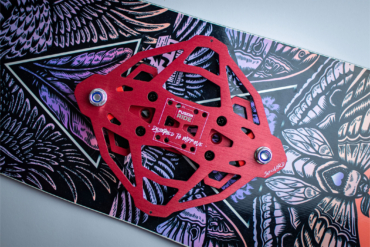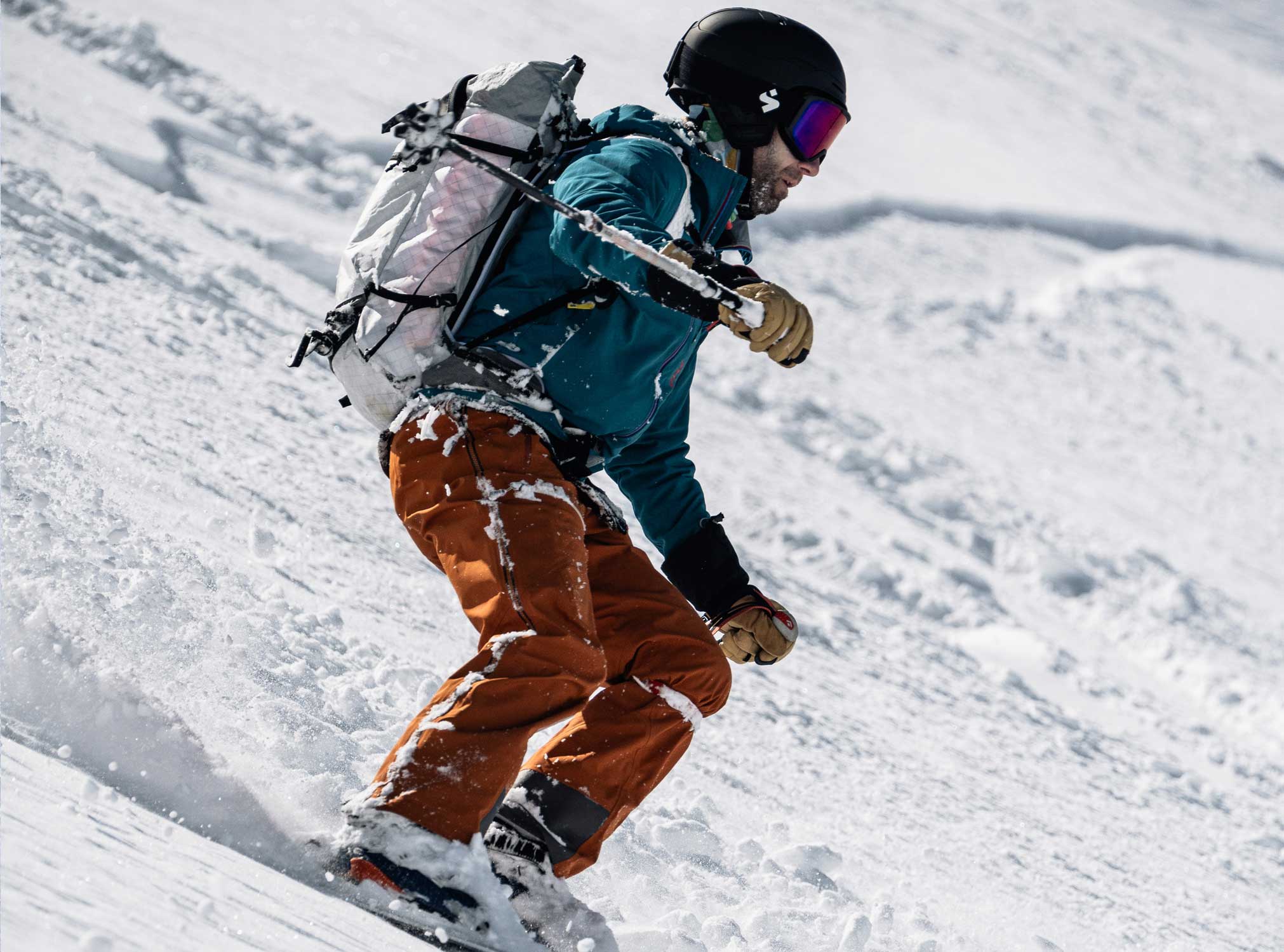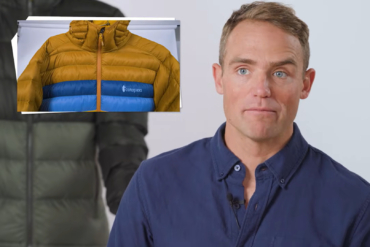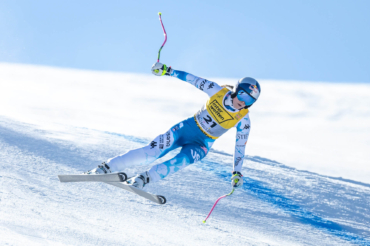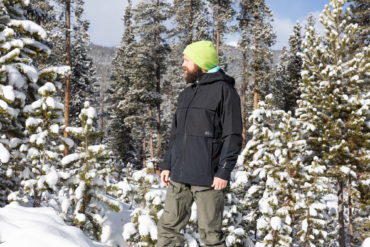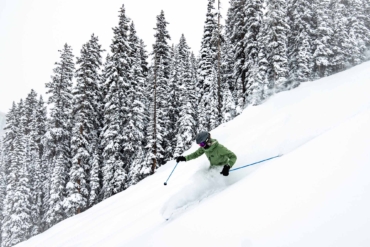It was a slow start to the ski season in Colorado. Each run was icier and more chaotic than the last as eager early-season skiers and riders scraped the piste down to its icy core. I rolled the dice on my first ski test of the season, optimistically opting for a wide ski hoping Ullr would deliver another strong season opener.
Turns out I made a good choice in the Völkl Blaze 106 despite the lackluster snowfall. The Blaze 106 — a powder ski by most measures — surprised me over and over again with its hard-snow performance. And once the ropes started dropping and soft-snow freeride terrain opened up, the Blaze showed up in a big way.
In short: Völkl’s 2024 Blaze 106s ($700) are more than the sum of their specs. “Surprising” is a descriptor I keep coming back to. They’re designed for soft-snow freeride performance, and that’s where they shine.
The Blaze 106 exceeded my expectations on all the choppy terrain and piste in between the powder laps. They carve and hold an edge very well for a big ski thanks to their intricate core design, subtle rocker profile, and sidecut. A relatively light weight means these skis are more than capable on the skin track, too.
For a rundown of GearJunkie’s favorite skis this year, check out The Best All-Mountain Skis of 2024.
- Sizes: 165, 172, 179, 186cm
- Shape: 146-106-128cm
- Recommended skier level: Intermediate, advanced, expert
- Rocker: Tip and tail rocker
- Category: Freeride
- Weight: 1,778 g
Pros
- Lightweight construction
- Strong soft-snow and powder performance
- Surprising carving ability
- Competitive price
Cons
- Some deflection in hard, choppy conditions
Völkl Blaze 106 Skis Review
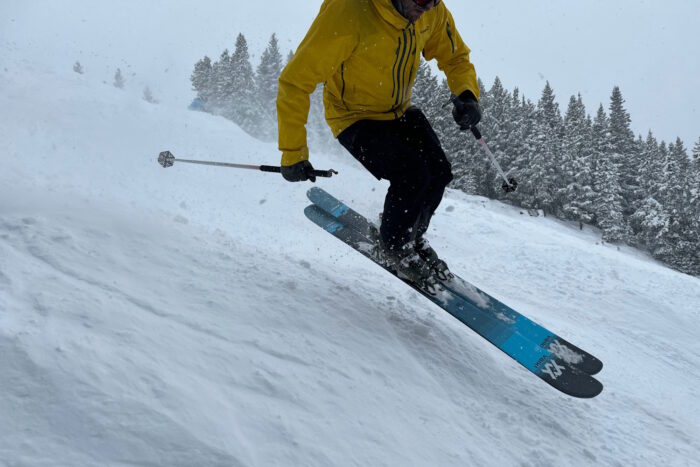
The Völkl Blaze 106 Body
I thought I had these Völkl skis figured out well before I snapped my boots in. They have lots of sidecut and a generous rocker, and they’re lightweight. I assumed they would probably be super turny, floaty, but also squirrely at speed and imprecise on hardpack.
But I was wrong — and I realized it quickly. My first run on the Blaze 106 was a delightful surprise even given Vail’s icy early-season conditions. They immediately felt longer and more stable than their deeply rockered 186cm length would suggest.
I picked up some speed to bring them to life and rolled my ankles right. My edges locked into the hard snow as I started my arching turn. They popped out, I straightened up, and I rolled them left. The edges drove deep into the icy piste more confidently than I expected from such a wide, light ski.
Triple Turn Radius
The Blaze 106 sports plenty of sidecut at 146-106-128 at the 186cm length I tested. According to Völkl, the Blaze employs a triple turn radius. That is, the primary radius underfoot is 19 m, the tip’s radius is 40 m, and the tail’s radius is 30 m (all in the 186cm size).
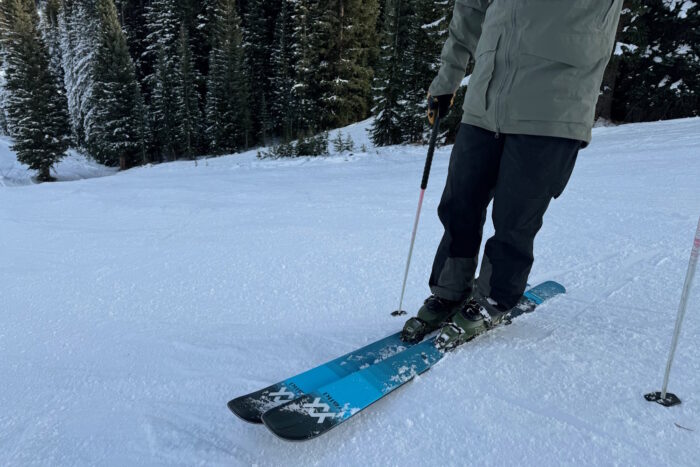
I think you’d need to be skiing in laboratory-like conditions to really parse out these exact turn dimensions. What I did find, however, is that the Blaze can readily knock out turns of basically any length. For most folks interested in this ski, that medium-length 19m radius is a good generalization. Don’t be intimidated by the 40m turn radius. That’s the upper end of their natural turn spectrum.
It’s no slouch on longer turns, though. The Völkl Blaze 106s proved they could hold a firm edge and carve big arches without flinching, especially when I applied some pressure to my powerful Dalbello Cabrio 130‘s tongue. And then they easily pivoted back to their foundational medium-length curves. Good technique unlocks a lot of carve power and that variable turn radius. That’s why these Völkl powder skis are aimed at intermediate-to-expert skiers.
I thought the fairly long rocker on either end of the traditional camber might take a bite out of their hard-snow performance. But I didn’t find that to be the case. The rocker is subtle enough that the edges engage early in the turn and don’t let go. Plus, the tips aren’t floppy, and they have solid torsional strength throughout the length of the ski to keep the edges engaged on hardpack.
In Soft Snow
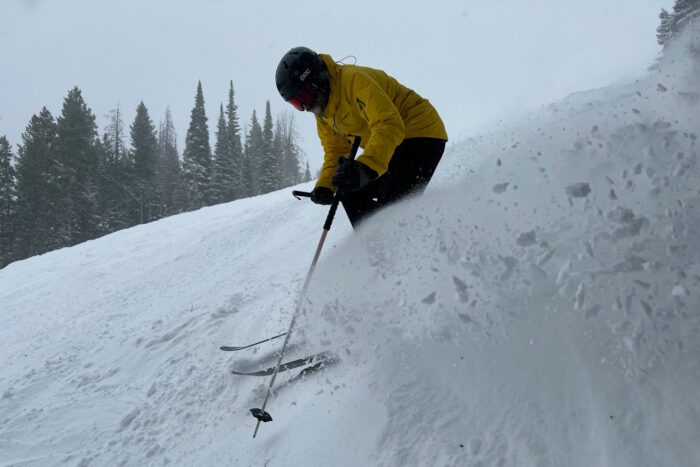
I was having so much fun ripping big turns that I almost missed the ropes dropping. As was the case with hardpack, those first few powder turns on the Blaze 106 were surprising. They weren’t the surfy, slarvy, pivoty powder boards that I was expecting given the sidecut and rocker. Instead, they felt composed, poised, directional, and confidence-inspiring.
That’s not to say they didn’t float, because they did — very well, in fact. But they didn’t have that ultra-buoyant, unsinkable, bouncy feel to them like a big powder ski. Instead, they maintained a balanced composure that, again, rewarded good technique. They encouraged me to stay forward, pick up speed, and charge. The benefit of that no-nonsense powder performance was that they weren’t hooky or squirrely at high speed.
They actually floated better than I expected for a 106cm-waisted ski, and it’s no mystery why. The 146cm shovels are as wide or wider than most powder skis. For comparison, the Black Crows Anima sports a 147cm shovel, the Fischer Ranger 116 goes up to 147 cm, and the 4FRNT Renegade comes in at 137 cm.
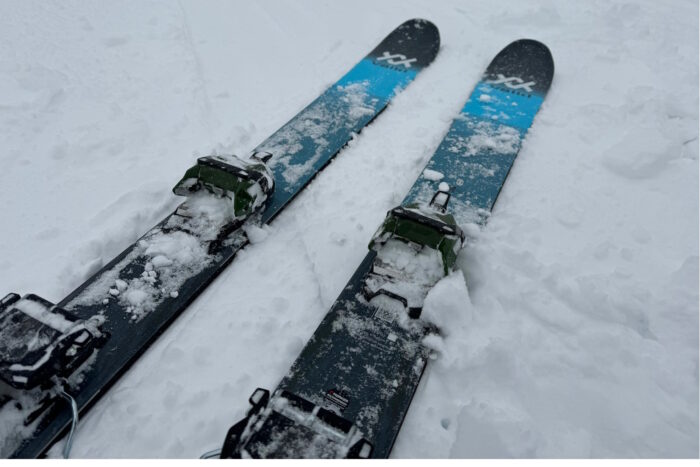
I loved that they didn’t feel like a speedboat where the tips sit high above the snow and the tails sink. I had assumed they might with those big shovels and a traditional rearward mount point. The tail is also comparatively narrow at 128 cm. (That’s the narrowest tail of the aforementioned skis by at least 5 cm.) Yet they stayed balanced fore and aft. So much untapered ski in front of you adds to the float in soft snow. So I didn’t worry about the tips diving, even while skiing aggressively forward.
And while their liveliness and maneuverability really open up in soft snow, they aren’t the type of ski that loves being thrown sideways and smeared. Scrubbing speed required a little more traditional technique than a softer, forward-mounted, ultra-rockered freeride ski would need. That’s one of the reasons why this ski is suited to a strong intermediate or advanced skier with solid directional technique.
Build and Components
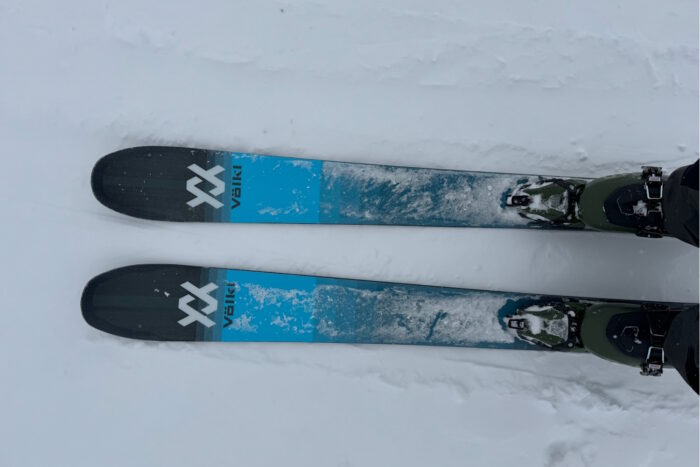
The Blaze 106 sports a sophisticated core beneath its simple topsheet. At its heart, Völkl employs a full wood core from tip to tail. It mixes lightweight and relatively soft poplar wood with strategically placed beech wood concentrated in the binding area and edges since it’s heavier, stronger, and damper.
Then they add Isocore, a single long stringer made from polyurethane foam reinforced with fiberglass. From there, they mill out parallel slots in the wood lengthwise to drop the weight and dial in the desired flex pattern. The more slots, the softer the section of ski. Combined with materials, it’s what allows the Völkl to dial in the Blaze 106’s relatively stiff tail, stiff underfoot section, and moderate shovel.
While race skis typically employ a lot of it, Völkl includes only partial Titanal (aluminum alloy) coverage in the Blaze range via a 0.3mm-thick plate in the central part of the ski. It adds power, stiffness, and torsional rigidity in that area while keeping the bindings stuck to the ski. The partial coverage doesn’t just keep the weight down; it keeps the rest of the ski lively and agile too.
Weight and Touring Capability
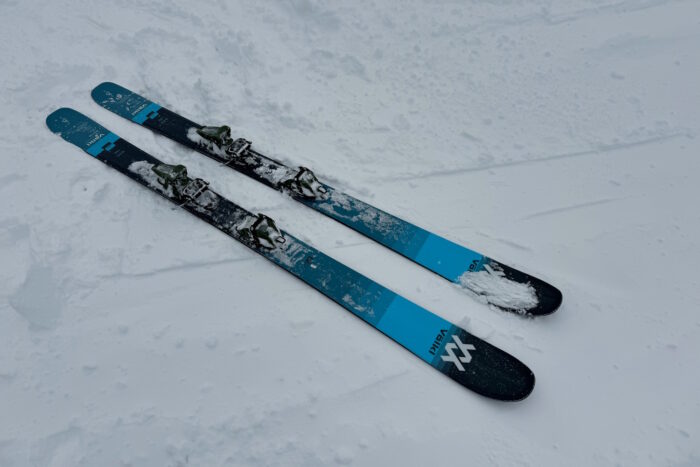
Lightweight skis are sweet. So are heavy skis. But weight typically isn’t on the top of my priority list when I’m not hoofing it to the top of each run. Metal and heavier woods help give freeride skis their power and dampness. When the lift is doing the work, I rarely think twice about grabbing my chonk-iest setup so that I can plow through crud, ski fast, and point it straight like my knees aren’t watching.
Given the Blaze’s intricate core design, I assumed it would feel about as heavy as other powder skis in this class. They surprised me the first time I picked them up and I immediately checked their spec sheet. The 186cm weighs in at 1,778 g. That lands them squarely in the freeride touring realm weightwise.
The lightness of these skis gives them levity and agility, especially at slower speeds where bigger, heavier skis struggle. Völkl’s Blaze 106 skis are a ton of fun, for example, in powdery tree stashes where they’re composed but also agile.
And although I had these mounted up with a powerful Marker Duke PT 16 binding, I wouldn’t hesitate for a second to drop in a light touring binding like the Marker Alpinist and start charging these Völkl powder skis up the skin track. There are plenty of touring skis on the market that give you a lot less while weighing more. And they ski a lot better than most featherweights.
That said, they’re not nearly as light as some dedicated touring skis on the market with similar dimensions, like the Black Diamond Helio 104 at 1,550 g (184 cm) or the Fischer Transalp 105 CTI at 1,660 g (185 cm). They’re not too far off, though.
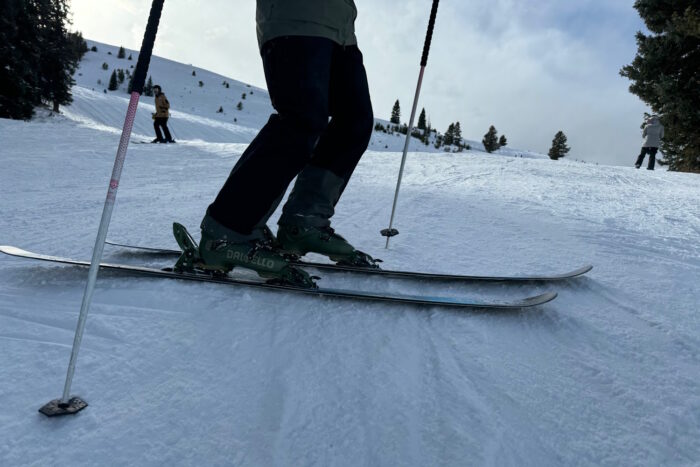
I’m a fan of keeping touring and alpine gear separate to realize the massive benefits at either end of the spectrum. But those wanting one setup for 50/50 resort/touring would find a great match in the Blaze 106, especially in areas with generally soft snow.
If I were to pair it with a touring boot, I’d probably go with something like the Fischer Transalp Carbon Pro. This isn’t a demanding ski, but it would be challenging to unleash its power on a boot in the 1kg realm. Even a powerful ultralight boot like my La Sportiva Skorpius CR II would be slightly under-gunned in tricky conditions aboard the Völkl Blaze 106 skis.
And although I’d be happy to jump up to a more powerful and heavier boot like the La Sportiva Vanguard, it’s not required to drive this ski through choppy conditions.
Challenging Conditions
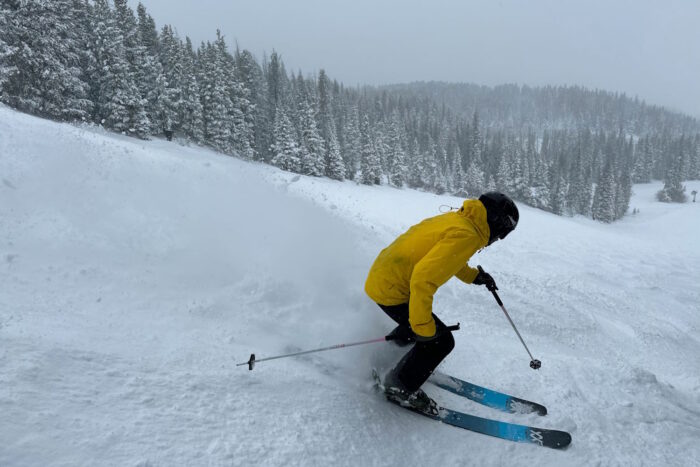
There’s a lot about these skis that’s surprising. What’s not surprising is that they don’t turn hard chop to butter like much heavier, metal-laden skis can. Still, the moderately stiff shovels resisted folding in that nasty stuff. The skis regained their composure once I dialed back the speed and focused on good technique.
That’s not to say that the Blaze skis can’t charge, because they certainly can, especially in the right conditions. They float and drive with the best of them in soft chop and perfect powder. And toward the end of the day when all the powder gets scraped off the steeps, their underfoot torsional rigidity gives them plenty of edge to keep the party rolling.
These powder skis aren’t stuck to powder days. I’d happily take them out any day that at least hinted at soft snow, even if it took some finding and a lot of piste in between. They’ve got the Völkl DNA after all. And Völkl knows a thing or two about sending it full blast down steep ice. Just ask Austrian racer Adrian Pertl.
Another aspect of the Blaze 106 that’s tough to beat is the price. In this day and age, $700 for a quality ski from a reputable brand, one that’s clearly built to last, is a solid deal.
Conclusion: Völkl Blaze 106
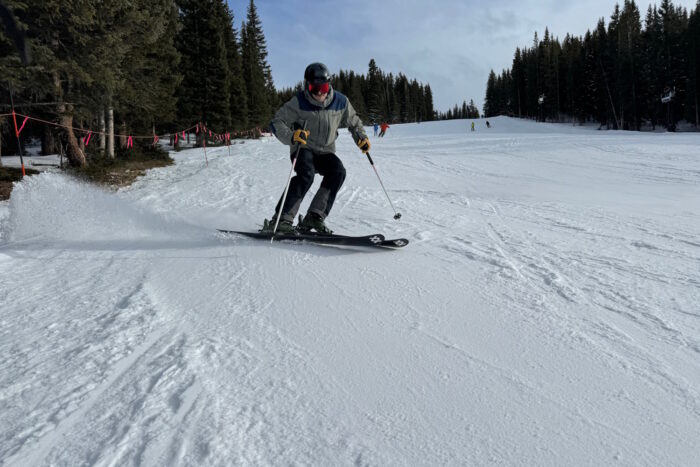
Big powder skis in big powder are a ton of fun. But toward the end of the day at the resort — when the powder gets tamped down, the moguls start growing, and the ice starts rearing its ugly head — big soft-powder skis get pretty not fun fast.
The Völkl Blaze 106 is a soft-snow ski that maintains the fun factor all day in almost any condition. If there’s even a suggestion of soft snow to be had, I don’t hesitate to grab them knowing I’ll be carving through groomers, hopping through moguls, and encountering a whole host of other snow conditions on my way to the powder stashes.
Will a stiffer, narrower ski carve even better on the hardpack? You bet. Will wider skis like the Völkl Blaze 114 float a little higher in the powder? Sure. Will something heavier like the Völkl Katana 108 plow through hard chop better? You’ve got me there too. But Völkl found the right balance of those characteristics and packed them into the lightweight Blaze 106.
They’re powder skis that intermediate and expert skiers will find intuitive, versatile, and even exceptional in soft-snow conditions. They’re so versatile, in fact, that they would make an excellent quiver-of-one ski for soft-snow zones or a solid 50/50 resort/touring ski.
